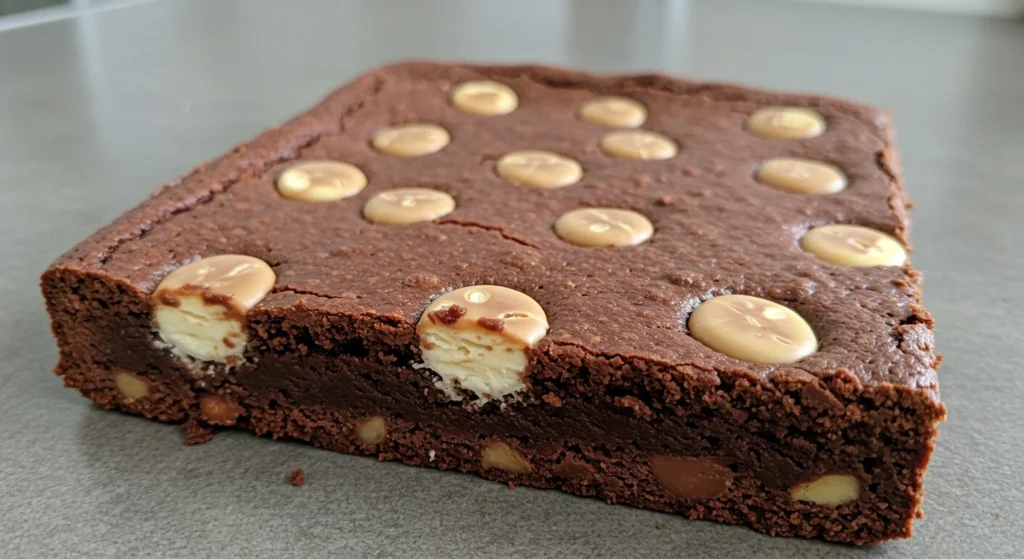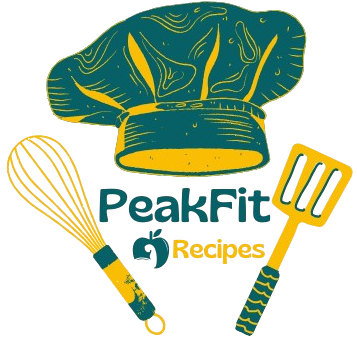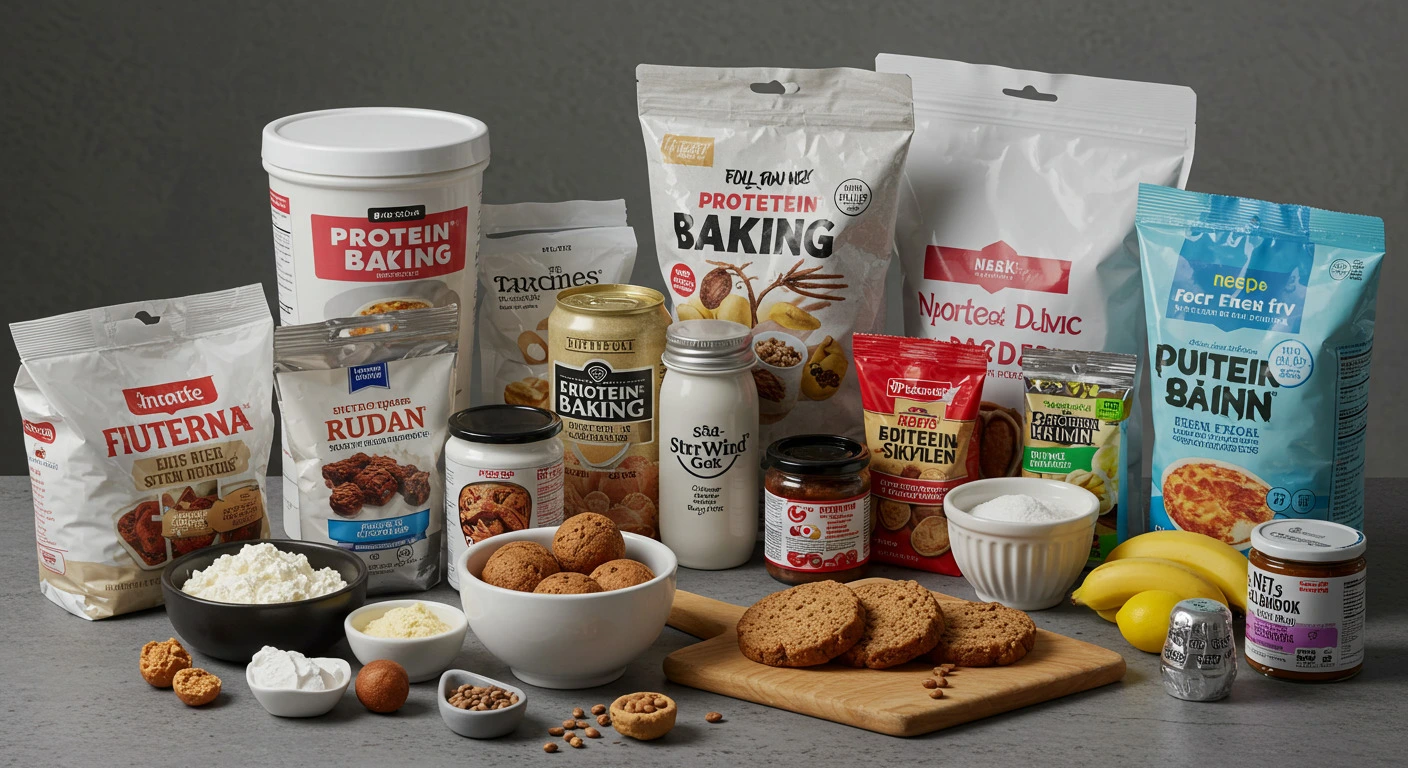introduction :Is it OK to bake protein powder?
Is it OK to bake protein powder? Protein powder is a staple in the kitchens of fitness enthusiasts, and for good reason. It’s a convenient way to boost protein intake, helping to build and repair muscle. But what happens when you want to bake with it? Can you use it in your favorite recipes? Does the heat affect its nutritional value or taste? Let’s dive in and explore the world of protein powder baking!
Understanding Protein Powder
Before we explore baking, let’s get a basic understanding of protein powder. Protein powder is a concentrated source of protein, typically derived from whey, casein, soy, or other sources. It comes in various flavors and formulations. Different types may work better or worse in baked goods.
Types of Protein Powder
- Whey Protein: This is the most common type, fast-digesting, and ideal for post-workout shakes. However, it can sometimes make baked goods dry.
- Casein Protein: Slow-digesting, often used before bed. Great for texture, but can be tricky to work with.
- Soy Protein: Plant-based, a good alternative for those with dairy allergies or restrictions.
- Pea Protein: Another plant-based option, becoming increasingly popular.
- Brown Rice Protein: Another plant-based option, often a bit gritty.
Image Placeholder: Image of different types of protein powder in containers. Alt Text: “Types of protein powder”
Nutritional Profile
Protein powders are designed to deliver a high concentration of protein per serving. They also often contain amino acids, which are the building blocks of protein. The specific nutritional profile varies depending on the brand and type of powder. Many contain added ingredients for flavor and texture.
Potential Considerations
Some protein powders can be high in sugar or artificial sweeteners. Always check the ingredient list to ensure it aligns with your dietary goals.
The Impact of Heat on Protein Powder
Now, let’s talk about heat. It’s the elephant in the kitchen when we’re baking with protein powder. Heat can affect protein powder’s structure, taste, and potentially its nutritional benefits.
Denaturation of Protein
Heat can cause the proteins in the powder to denature. This means the protein’s structure changes. However, it’s not necessarily a bad thing for baking. Denaturation can help the protein to bind ingredients and create a different texture.
Flavor and Texture Changes
Heat can change the flavor of protein powder, sometimes for the worse. Some protein powders may become bitter or develop an off-taste when baked. The texture can also change, potentially making baked goods dry or rubbery.
Nutritional Value
While heat can denature the protein, it generally doesn’t destroy the amino acids that are the building blocks of the protein. However, some vitamins and minerals added to protein powders may be heat-sensitive.
Image Placeholder: Illustration showing the effects of heat on protein structures. Alt Text: “Protein denaturation”
Research and Studies
There hasn’t been extensive research on the effects of baking on all the different types of protein powder. But the general consensus is that it’s usually safe, and the impact on nutritional value is minimal.
Is it OK to Bake Protein Powder?
So, is it OK to bake protein powder? Absolutely! It’s a great way to incorporate protein into your diet and create delicious and healthier treats. However, it’s important to be mindful of the type of protein powder you use and the recipe you choose.
Benefits of Baking with Protein Powder
- Increased Protein Intake: Baking with protein powder boosts the protein content of your treats.
- Healthier Alternatives: Protein powder can replace some flour and sugar, making baked goods healthier.
- Versatility: You can add protein powder to a wide variety of recipes.
Considerations for Baking with Protein Powder
- Type of Protein Powder: Some types of protein powder work better than others. Experiment to find your favorite.
- Recipe Adjustments: You may need to adjust the recipe to compensate for the texture and flavor of the protein powder. Start with a small amount.
- Mixing Technique: Overmixing can make baked goods tough. Mix until just combined.
Tips for Baking with Protein Powder
Ready to start baking? Here are some tips to make the process successful and enjoyable:
Choosing the Right Protein Powder
- Whey Protein: A good choice, but can dry out baked goods.
- Casein Protein: Provides a good texture, but can be tricky to work with.
- Plant-Based Proteins: Soy, pea, and brown rice can work well, but may have a different flavor profile.
- Consider Flavor: Unflavored protein powder gives you the most control over flavor.
Image Placeholder: Image of various baked goods with protein powder incorporated. Alt Text: “Protein powder baking examples”
Recipe Adjustments
- Reduce Flour: Start by substituting 1/4 to 1/3 of the flour with protein powder.
- Add Moisture: Protein powder tends to absorb more moisture. Add extra liquid ingredients like milk, yogurt, or applesauce to prevent dryness.
- Use Fats: Fats like butter or oil can help prevent the protein powder from making the baked goods dry.
- Sweeteners: Adjust the sweetener based on the protein powder’s flavor.
Mixing and Baking
- Mix Gently: Avoid overmixing, which can make baked goods tough.
- Monitor Baking Time: Bake for a shorter time than usual, as protein powder can cook faster.
- Check for Doneness: Use a toothpick or cake tester to ensure the baked goods are fully cooked.
3 Amazing Protein Powder Recipes
Let’s get baking with these three fantastic recipes!
Recipe 1: Protein Pancakes
Pancakes are a classic! This recipe gives you a protein boost for a great start to the day.
Ingredients:
- 1/2 cup rolled oats
- 1 scoop vanilla whey protein powder
- 1/2 teaspoon baking powder
- 1/4 teaspoon salt
- 1 egg
- 1/2 cup milk (or water)
- 1 teaspoon vanilla extract
- Optional: berries, nuts for topping
Instructions:
- Combine dry ingredients (oats, protein powder, baking powder, salt) in a bowl.
- In a separate bowl, whisk together the egg, milk, and vanilla extract.
- Add the wet ingredients to the dry ingredients and mix until just combined.
- Heat a lightly oiled griddle or frying pan over medium heat.
- Pour 1/4 cup of batter onto the hot surface for each pancake.
- Cook for 2-3 minutes per side, or until golden brown.
- Serve immediately with your favorite toppings.
Image Placeholder: Image of finished protein pancakes. Alt Text: “Protein pancakes recipe”
Recipe 2: Protein Brownies
These brownies are rich, fudgy, and packed with protein.
Ingredients:
- 1/2 cup unsweetened cocoa powder
- 1/2 cup protein powder (chocolate or vanilla)
- 1/4 cup all-purpose flour
- 1/2 teaspoon baking powder
- 1/4 teaspoon salt
- 1/2 cup sugar
- 1/4 cup unsweetened applesauce
- 1/4 cup milk
- 1 teaspoon vanilla extract
- 1/4 cup chocolate chips (optional)
Instructions:
- Preheat your oven to 350°F (175°C). Grease and flour an 8×8 inch baking pan.
- In a bowl, whisk together the cocoa powder, protein powder, flour, baking powder, and salt.
- In a separate bowl, combine the sugar, applesauce, milk, and vanilla extract.
- Add the wet ingredients to the dry ingredients and mix until just combined. Stir in chocolate chips.
- Pour the batter into the prepared pan and bake for 20-25 minutes.
- Let cool completely before cutting and serving.
Recipe 3: Protein Muffins
These muffins are perfect for a grab-and-go breakfast or snack.
Ingredients:
- 1 cup all-purpose flour
- 1/2 cup protein powder (vanilla or unflavored)
- 1/4 cup sugar (or sweetener of choice)
- 2 teaspoons baking powder
- 1/4 teaspoon salt
- 1 egg
- 1/2 cup milk
- 1/4 cup melted butter
- 1 teaspoon vanilla extract
- 1 cup berries (fresh or frozen) or other mix-ins
Instructions:
- Preheat your oven to 375°F (190°C). Line a muffin tin with paper liners.
- In a bowl, combine the flour, protein powder, sugar, baking powder, and salt.
- In a separate bowl, whisk together the egg, milk, melted butter, and vanilla extract.
- Add the wet ingredients to the dry ingredients and mix until just combined. Fold in the berries.
- Fill the muffin cups about 2/3 full.
- Bake for 18-20 minutes, or until a toothpick inserted into the center comes out clean.
Maximizing Protein Content
When baking with protein powder, you want to maximize the protein content. Consider adding ingredients like Greek yogurt, which is naturally high in protein. You can also experiment with other protein sources, such as cottage cheese or even silken tofu (in certain recipes) to boost the protein content of your baked goods. Always consider the flavor profile when adding any ingredients. Remember, your focus is the protein, so make it count.
Texture and Flavor Enhancement
Sometimes baking with protein powder can lead to a less-than-desirable texture. Some tips? Use a mix of different flours. Blending all-purpose flour with whole wheat or even almond flour can improve the texture of your protein powder baked goods. For flavor, use high-quality extracts, spices, and natural sweeteners to mask any potential aftertaste from the protein powder. Cinnamon, vanilla, and almond extract are good examples, but there are endless possibilities.
Optimizing Nutrient Density
Don’t just stop at the protein! Think about the overall nutrient density of your protein powder creations. Incorporate ingredients like fruits, vegetables (zucchini bread, anyone?), and healthy fats (avocado, nuts) to add vitamins, minerals, and antioxidants. This approach transforms your treats from a simple protein delivery system into a truly balanced and nutritious snack.
Image Placeholder: Image of a selection of ingredients to use with protein powder – almonds, avocados, berries, and oats. Alt Text: “ingredients to go with protein powder”
Troubleshooting Common Issues When Baking with Protein Powder
Even for experienced bakers, baking with protein powder can present a few challenges. Let’s troubleshoot some common issues and learn how to address them:
Dryness and Crumbly Texture
One of the most frequent complaints is dryness. The protein powder can absorb a lot of moisture. To combat this, add extra liquid. Consider using applesauce, yogurt, or even a little extra oil to add moisture to your recipe. If you find that your baked goods are still dry, try reducing the amount of protein powder slightly or adding ingredients with a higher water content. Experiment is key!
Bitter or Off-Flavors
Some protein powders have a slightly bitter or artificial aftertaste when baked. This is more common with certain types or brands. Try using a high-quality protein powder. Using a flavor extract such as vanilla or a spice like cinnamon can often help mask any unpleasant flavors. You can also try to add a pinch of salt, which can sometimes balance out bitterness.
Dense or Rubbery Texture
Overmixing is a common culprit for dense baked goods. When you are baking with protein powder, be sure to mix ingredients until they are just combined. Overmixing develops gluten, which results in a tough texture. Following the recipe instructions, especially regarding oven temperature and baking time, is crucial for a light and fluffy texture.
Recipes that Don’t Rise Properly
This is sometimes a result of the type of protein powder used, the age of your leavening agents (baking powder/soda), or the amount of liquid used. Always make sure that your baking powder is fresh. Check the expiration date. Additionally, be sure that you are using the correct amount of liquid, and that it is well incorporated, but not overmixed.
Image Placeholder: Image of hands troubleshooting a dry cookie in the kitchen. Alt Text: “Troubleshooting protein powder cookie”

FAQ: Is it OK to bake protein powder?
Can I bake my protein powder?
Yes, you can bake protein powder! It’s a great way to add protein to your favorite treats. However, be mindful of the protein powder type, the recipe adjustments, and mixing techniques.
Does protein powder still work when baked?
Yes, protein powder still works when baked. The protein will denature due to the heat, but the amino acids remain intact. The overall nutritional value is still significant.
Can you put protein powder in the oven?
Yes, you can put protein powder in the oven. It is perfectly safe, but it is not a good idea to put it in the oven without other ingredients. It is best to bake it into a recipe.
Does heat ruin protein powder?
Heat does change protein powder, causing protein denaturation. However, it doesn’t necessarily ruin it. The nutritional value is mostly maintained. Baking may affect the texture and flavor of the finished product.
conclusion: Is it OK to bake protein powder?
In conclusion, the answer to the question, “Is it OK to bake protein powder?” is a resounding YES! Baking with protein powder is a fantastic way to boost your protein intake and create delicious, healthier treats. While there are some considerations to keep in mind – from the type of protein powder to recipe adjustments – the benefits are undeniable.
Remember to experiment! Don’t be afraid to try different recipes, explore various protein powder types, and adjust ingredients to suit your tastes and preferences. By mastering the tips and techniques we’ve covered in this article, you can create a world of delicious, protein-packed baked goods that support your fitness goals and satisfy your sweet tooth. So, preheat your oven, gather your ingredients, and get ready to bake!

